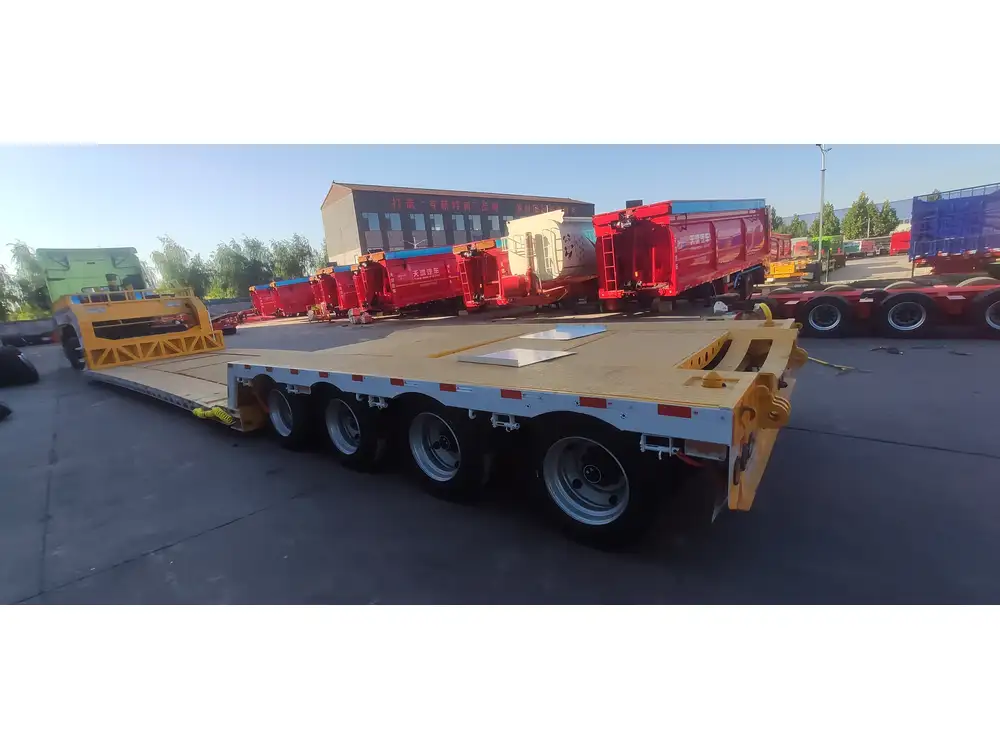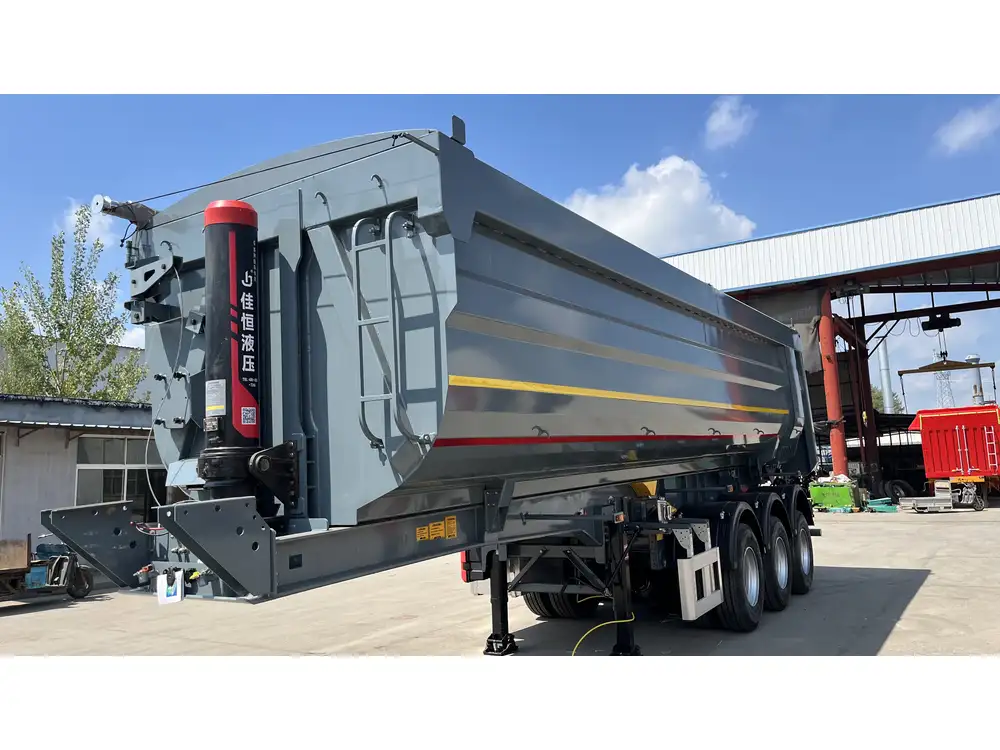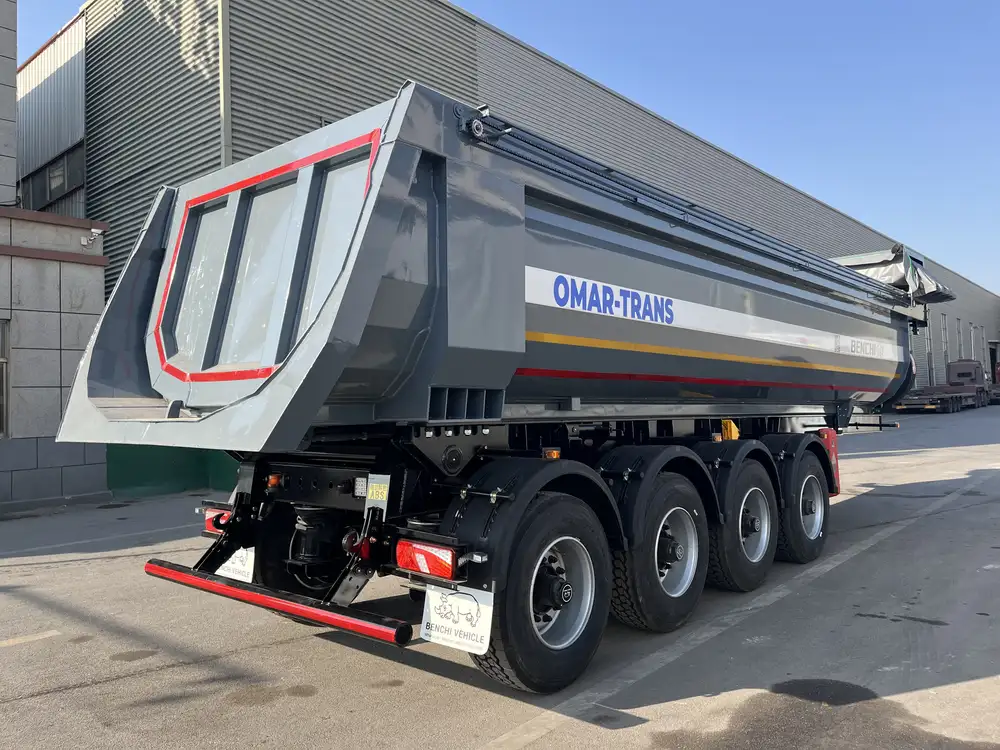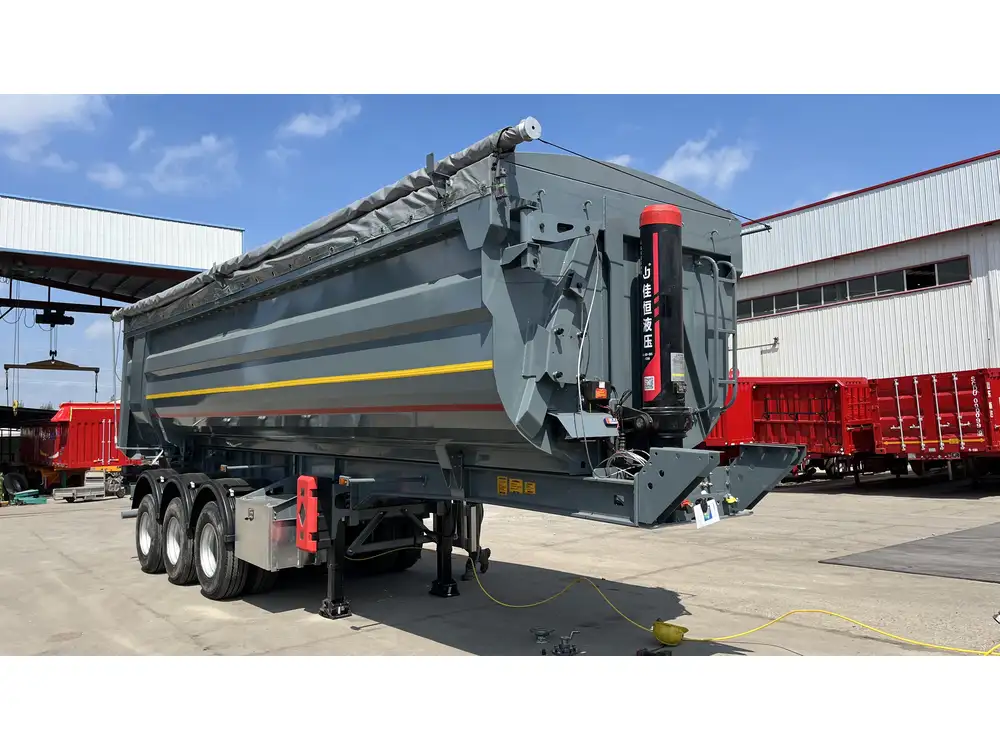Building a 5th wheel flatbed trailer is an intricate process, blending creativity with technical precision. As a premier manufacturer specializing in semi-trailers, we understand the intricacies involved in creating a reliable, efficient, and durable trailer. This guide aims to provide a step-by-step overview of constructing a 5th wheel flatbed trailer, ensuring that all critical considerations are addressed for optimal results.
Understanding 5th Wheel Flatbed Trailers
Overview
A 5th wheel flatbed trailer is designed specifically for heavy-hauling applications, providing greater stability and drag reduction compared to traditional trailers. This construction type uses a unique coupling mechanism that offers significant advantages in maneuverability, weight distribution, and load capacity.

Key Advantages
| Advantage | Description |
|---|---|
| Enhanced Stability | The 5th wheel connection lowers the vehicle’s center of gravity. |
| Increased Maneuverability | Allows for tighter turns, essential for navigating urban areas. |
| Higher Payload Capacity | Typically designed to handle heavier loads compared to gooseneck trailers. |
Essential Considerations Before You Start
Determine Your Needs
Clarifying the purpose of the trailer will guide the design and construction choices. Will it be used for hauling construction materials, automotive transport, or perhaps recreational purposes? Each use case demands a tailored approach to ensure optimal functionality.

Choose the Right Materials
| Material | Characteristics |
|---|---|
| Steel | High durability, excellent for structural integrity and load-bearing. |
| Aluminum | Lightweight, resistant to corrosion, suitable for frequent haulers. |
| Wood | Commonly used for flooring, blends affordability with moderate durability. |
Planning the Design
The design phase is crucial. Use CAD software to draft a conceptual layout that aligns with your requirements while adhering to safety and regulatory standards. Key aspects to include are dimensions, weight distribution, and coupling mechanisms.
Step-by-Step Construction Process

1. Gather Essential Materials and Tools
Here’s a list of materials and tools necessary for constructing a 5th wheel flatbed trailer:
Materials:
- Steel beams for the frame
- Steel or aluminum sheet for the floor
- 5th wheel hitch
- Springs and axles
- Wood for flooring (if applicable)
- Couplers and safety chains
- Paint or protective coating
Tools:
- Angle grinder
- Welder
- Drill
- Tape measure
- Level
- Safety gear (gloves, goggles, etc.)

2. Design and Cut the Frame
Initiate the construction by fabricating the frame:
- Frame Layout: Determine the dimensions based on your specifications. A common flatbed length is between 8 to 40 feet depending on the application.
- Cutting Steel Beams: Use precision cutting tools to ensure that the beams are cut to the correct lengths. Avoid hasty cuts as uneven edges can compromise structural integrity.
3. Assemble the Frame
Once the pieces are cut, begin assembling the frame:
- Welding: Follow your design to weld the beams together, ensuring that all connections are secure. Use a level to verify that the frame is perfectly square.
- Cross Members: Install cross members to support the flooring, spaced strategically according to the expected load.
4. Install the Floor
After the frame is assembled, it’s time to install the floor:
- Floor Material Selection: If using wood, ensure the planks are treated for longevity; otherwise, opt for a suitable metal sheet.
- Securing the Floor: Attach the flooring material to the frame using bolts or welds, depending on the chosen materials and desired strength.

5. Add Axles and Suspension
The next critical step is integrating the axle and suspension system:
- Position Axles: Depending on the size of your trailer and the load it will bear, position the axles strategically, typically 1/3 from the front of the trailer.
- Install Suspension System: Choose a suitable suspension system, either leaf springs for maximum loads or torsion axles for smoother rides. Secure the axles to the frame with robust hardware to withstand the stresses of hauling.
6. Attach the 5th Wheel Hitch
This is where the uniqueness of a 5th wheel system becomes evident:
- Choosing a Hitch: Select a hitch that matches your truck’s capacity. A standard model will often suffice for most builds.
- Installation: Align the hitch with the predetermined mounting points on the trailer’s frame and secure it with high-strength bolts. Ensure it is at an appropriate height for towing compatibility.
7. Wiring and Lights
Safety is paramount, and visibility plays a crucial role:
- Electrical Wiring: Lay out the necessary wiring for lights, brake signals, and trailer brakes if applicable. Ensure all connections are well insulated to prevent short circuits.
- Install Lights: Attach reflectors and lights at both the rear and sides, enabling visibility during night-time operations.

8. Finishing Touches
After structural work, enhance and protect your trailer:
- Surface Protection: Apply a rust-resistant paint or powder coating to help prevent corrosion over time.
- Load Testing: Before regular use, conduct load tests to ensure the trailer can handle its maximum capacity without compromising integrity.
Maintaining Your 5th Wheel Flatbed Trailer
Regular Inspection
Maintenance is key to extending the life of your trailer. Regularly inspect the following components:
- Hitch Connections: Ensure tightness and look for signs of wear.
- Wheels and Tires: Inspect for uneven wear and check air pressure before each trip.
- Brake System: Regularly check for responsiveness and pad life to ensure safety during operation.

Cleaning and Storage
Proper cleaning and storage will preserve your investment:
- Clean Regularly: After each use, wash the trailer to remove road grime and potential corrosive substances.
- Store Properly: When not in use, keep your trailer covered or stored indoors to protect it from the elements.
Frequently Asked Questions (FAQs)
What is the maximum load capacity for a 5th wheel flatbed trailer?
The load capacity can vary significantly based on design and manufacturing specifications, but many 5th wheel flatbed trailers can handle loads ranging between 14,000 to 30,000 pounds.

Is it hard to build a 5th wheel flatbed trailer?
While building a 5th wheel flatbed trailer requires technical skills and tools, following a structured approach and having a solid design plan can make the process manageable. Gaining experience through smaller projects may also help build confidence.
Can I modify a 5th wheel flatbed trailer?
Absolutely. Modifying a trailer to suit specific needs is common. Always ensure that modifications comply with local safety and road regulations.
Conclusion
Building a 5th wheel flatbed trailer is no small feat but is undeniably rewarding. From carefully selecting the right materials to ensuring the structural integrity of your end product, every step must be meticulously executed. Following the guidelines outlined in this article will equip you with the necessary knowledge to successfully construct a reliable and efficient trailer. Emphasize quality and safety in your build, and you’ll have a trustworthy vehicle that meets your hauling needs for years to come.



